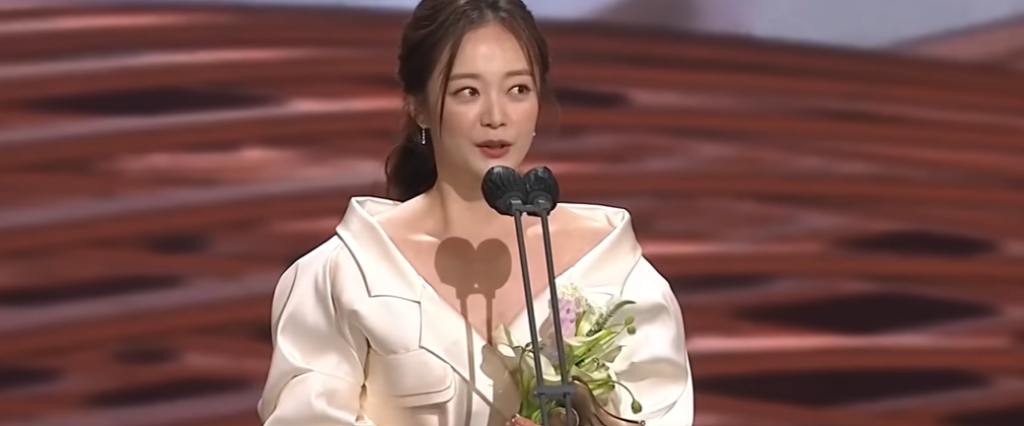Private heartbreaks for public figures frequently surface on a harsh stage. The untimely death of Kim Sae Ron has led to intense scrutiny in recent months, not only of her career and mental health, but also of the actor Kim Soo Hyun, with whom she was once romantically involved. His part in her life—and death—has become more prominent as feelings rise and stories clash.
Kim Soo Hyun, who was once adored for his captivating on-screen persona and considered a national celebrity, is now facing a completely different kind of attention. Soon after the actress’s alleged suicide in February 2025, their previous relationship came under scrutiny. Almost immediately, accusations began to surface, some of them intensely personal, some remarkably speculative. In a prompt response, his organization, Gold Medalist, called the charges “malicious” and “fabricated,” and proceeded to file a lawsuit against HoverLab and Sae Ron’s relatives.
When a purported text message from Kim Sae Ron in 2018 came to light, the story took a more serious turn. “You’re always MIA when I need you,” she wrote in her message, which sounded like a plea for reciprocity. Despite being straightforward, these words were eerily revealing. They depicted a person who was emotionally unbalanced and, more painfully, who felt incredibly alone.
Kim Soo Hyun – Personal and Professional Information
| Field | Details |
|---|---|
| Full Name | Kim Soo Hyun |
| Date of Birth | February 16, 1988 |
| Nationality | South Korean |
| Profession | Actor |
| Notable Works | My Love from the Star, It’s Okay to Not Be Okay, Queen of Tears |
| Relationship with Kim Sae Ron | Reported ex-boyfriend (allegedly dated in 2018) |
| Public Statements | Denied all allegations, admitted to past relationship, filed defamation lawsuits |
| Reference | New York Times Article |
Kim Soo Hyun acknowledged the previous relationship by speaking to the media during a press conference. However, he vehemently denied that it started when Sae Ron was a teenager. He stated calmly but obviously under stress, “I did not date her when she was a minor.” “I’ll take criticism if people call my position cowardly or selfish, but I won’t take responsibility for things I didn’t do,” he added. Even though he spoke in a calm tone, there was an obvious undertone of agony.

For those watching from a distance, the issue was one of accountability rather than guilt. What obligations do public figures have in the face of tragedy, according to a society? And what occurs when emotional scars are shared by the public through viral videos, hashtags, and headlines?
Amazingly, there were more layers to the story than this. At about the same time, Lee Chan Hee, an artist who also claimed to have dated Sae Ron, came to light. His comments contradicted the story her family had told, claiming that she had previously been married in secret and endured emotional abuse unrelated to Soo Hyun. He defended Soo Hyun, arguing that his name was being unfairly dragged through the mud for clicks and clout.
These developments revealed something deeper: the fragmented, conflicting stories we often construct around celebrity lives. Through competing voices—grieving relatives, defensive agencies, opportunistic YouTube channels—we begin to see how fame, grief, and storytelling collide. Although each side gives their version, the truth appears to be enmeshed in the conflict between them.
It could be argued that Kim Sae Ron’s decline started long before she died. A drunk driving incident in 2022 destroyed her reputation. This incident caused a series of career setbacks, which were especially detrimental in image-conscious Korean entertainment. She was later removed from Bloodhounds after being cut from Trolley. She appeared to disappear virtually overnight in a field where women are rarely given second chances.
In contrast, her male peers—even those involved in more serious crimes—frequently regain public favor very quickly. This obvious disparity is not only annoying, but it also serves as a symbol of a system that is both selectively forgiving and severely punitive.
Whether on purpose or by accident, Soo Hyun’s participation in the story has unavoidably changed public opinion. Although a lot of people have supported him, others wonder how these kinds of connections are made, sustained, and eventually remembered in a field where age differences and power dynamics are still delicate—and frequently unsaid—issues.
The Korean entertainment industry has experienced a wave of reckoning during the last ten years. The problems extend well beyond any one person or controversy, ranging from claims of bullying to suicides caused by cyberbullying. The passing of Kim Sae Ron seems like yet another tragic chapter in a continuing tale in this context. However, it has also led to a noticeably louder discussion about industry accountability, emotional support networks, and mental health.
The public and media have a chance to change their reactions to these events by having an open discussion. Perhaps the emphasis should be on comprehending the systemic circumstances that caused the young woman to feel alone, rather than breaking her life down into scandalous pieces.
The fact that some media outlets and influencers are choosing empathy over accusations and nuance over indignation is encouraging. Despite being gradual, this change represents a cultural shift toward more responsible storytelling. Young artists juggling fame and vulnerability may find this development to be very helpful.
In the future, Kim Soo Hyun’s career is probably going to endure, albeit in a modified form. What the entertainment industry learns—and unlearns—in reaction to this tragedy, however, might be the real legacy here. Transparency, compassion, and reform are now essential for a generation that has grown up with instant access to celebrity and its consequences. They are essential.


